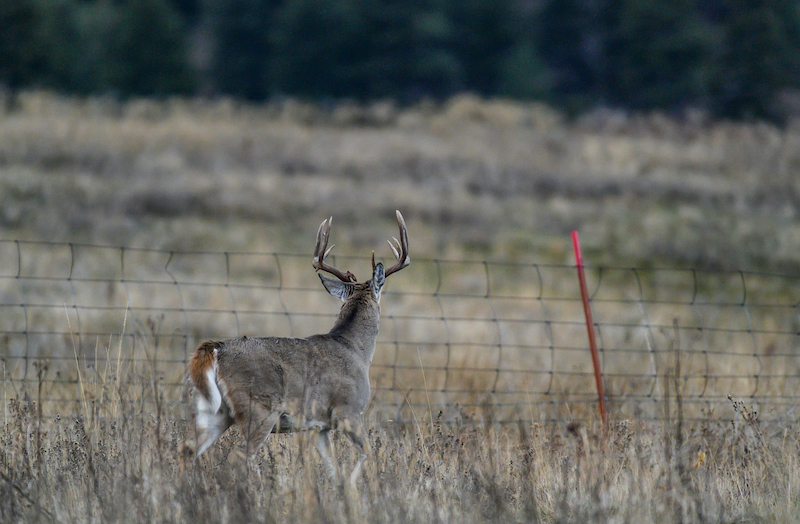Spring: Prime Time to Scout and Work Your Land
Many bowhunters start scouting seriously in summer, but Wisconsin’s Jason Wenzel thinks it’s better to hit the woods in spring to find sign, identify hotspots, and launch land- and habitat-management projects. Spring activities also motivate you to get outdoors to jumpstart deer season.
Grandpa Ray Outdoors provides education to hunters that want to maximize their food plots and other hunting tactics. Photo Credit: Grandpa Ray Outdoors
Wenzel has bowhunted 25 years, and is director of operations at Grandpa Ray Outdoors, a wildlife-education company that helps hunters and landowners create food plots and deer sanctuaries on their properties. He lists five reasons why hunters should scout, hang treestands, and tackle property projects in spring:
- The previous hunting season is fresh in your mind. You’re more likely to recall where deer were eating, resting and traveling.
- An early start gives you time to complete tasks before autumn’s hunting seasons.
- Human scent left by your work and wanderings will dissipate long before fall.
- Deer have time to accept or adjust to treestands, ground blinds or other changes to their turf.
- You won’t pressure deer shortly before the season, which can make them easier to pattern.
Meanwhile, you can participate in other spring activities to maximize time afield, such as casually scouting as you hunt sheds or turkeys.
Look for these six things while spring scouting:
- Rubs and scrape lines: Wenzel said rubs and scrape lines from the previous season remain somewhat fresh into spring. Mark their locations because deer often reopen these communication sign-posts the next year.
- Bedding areas: Knowing where deer bed is crucial to intercepting them as they move to or from feeding. Study areas with thick cover. Does and bucks typically bed in different areas most of the year. Does tend to bed in groups during autumn, while bucks usually bed alone. Does like bedding in dense weeds or brush near food. Bucks often bed farther from food in thick, gnarly high ground where they can monitor wind currents and the terrain below.
- Food sources: A whitetail’s diet changes throughout the year, as you’ll learn in the Bowhunting 360 article “Understanding a Whitetail’s Diet.” If you learn what deer eat in late winter and early spring, you’ll likely be ready for them during late-season bowhunts this fall.

Deer will always opt to find a break in the fence line rather than jump it. Photo Credit: John Hafner
- Land features: Deer like shortcuts and easy routes when traveling. Rather than jump a barbwire fence, they’ll cross where its strands are broken or crushed beneath a tree trunk. They’ll also walk around ponds rather than swim across. Wenzel suggests looking for land features like funnels or pinch points that steer deer in specific directions. Strategic terrain features include hills, valleys, waterways, fence lines, thick cover along streams, and edges where two types of timber meet at a corner. These features create travel corridors, which make hunting hotspots. Learn to use maps to help identify such features.
- Trail systems: Deer trails reveal how deer use the land as they follow these narrow paths through the woods. Beaten down trails are heavily used. Study trails for fresh tracks and droppings to determine if they’re actively used.
- Potential stand locations: Compile and compare all your findings to pinpoint possible stand sites in high-traffic areas between food and bedding cover. Factor in bonus points likes rubs, scrapes, funnels and pinch points.
Creating a watering hole on your property will encourage more deer traffic. Photo Credit: Grandpa Ray Outdoors
Carry a notepad and take notes while scouting, Wenzel said. Write down the locations of hot trails, natural browse, and ideal treestand spots. If you’re on private property, keep track of possible projects, which might include cutting timber, trimming shooting lanes, conducting prescribed burns, or creating waterholes or food plots.
“Everyone is busy, and a lot of people wait until the last minute to scout and do all this work,” Wenzel said. “But now is the time to do it. Give yourself enough time to prepare and accomplish projects, but also to give deer time to adjust.”
In other words, finish your to-do list in spring so you can focus on improving your shot this summer and be deadly with your bow this fall.
